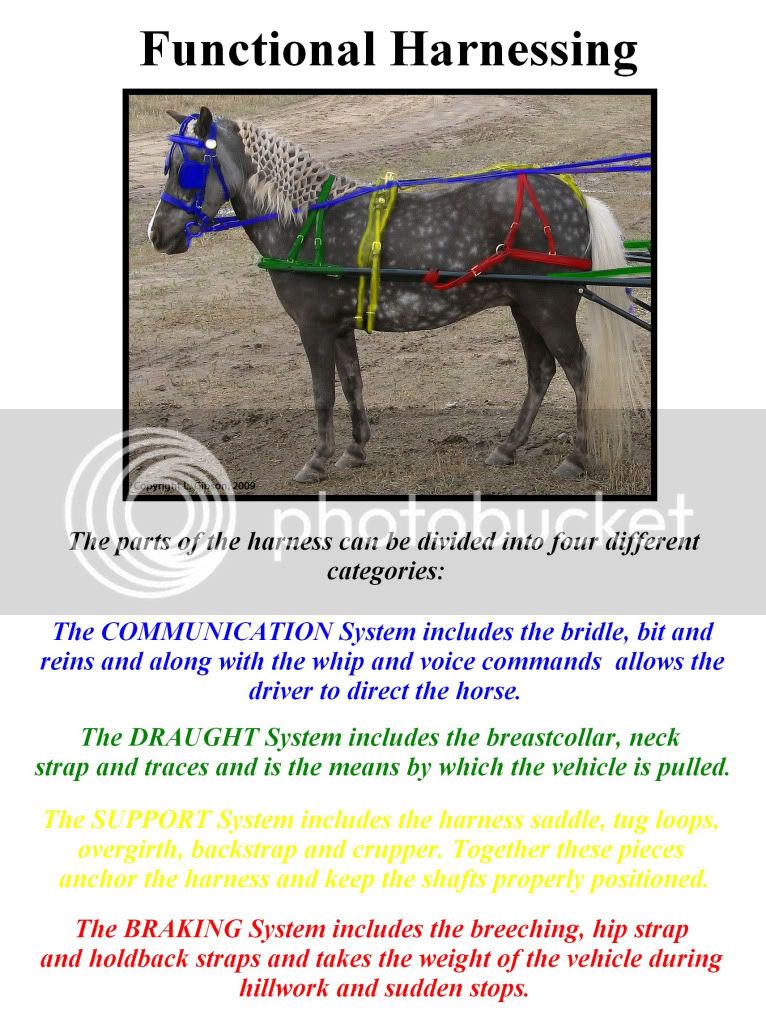hobbyhorse23
Well-Known Member
I almost forgot about that! I went digging and found the original thread I shared that diagram in.Leia had a set of diagrams that she puts out - describing the parts of the harness and how each part was a portion of a "system" and how each system worked. Direction (bridle and lines), pulling (breast collar & traces), brakes (breaching, hipstrap or backstrap assembly & crupper, holdback straps) & carrying (?) - (saddle, shaft carriers, wrap straps).
...Wrap straps, French tugs, Tilbury tugs, open tugs, quick hitch harness racing setups...all have the important function of holding the shafts at a stable height. The tugs hold the shafts up, the wrap straps or other overgirth system hold them down, and together they keep the outside shaft close to the horse's side during turns so the inside shaft doesn't push into his body as strongly. Where we run into problems is assigning that anchoring system the additional task of acting as brakes, something it was never meant to do.
Here's a diagram I sometimes hand out at harnessing clinics explaining the basic functions of the harness parts. (Sorry if the yellow text is hard to read, it came out better in print!)

There should be a smooth swing from the traces pulling the vehicle forward to a moment of inertia as the horse slows to the breeching coming into play and stopping the vehicle without any loosey-goosey slamming around or shifting of the shafts. Same thing going forward- the breeching loosens, the tugs swing slightly transferring the motion as the horse steps off and the traces come into play before the horse has to start pulling from the saddle.
Everything works together on a harness.
Leia
I should have just typed it out for you since I knew it was illegible- sorry!The yellow says, "The SUPPORT System includes the harness saddle, tug loops, overgirth, backstrap and crupper. Together these pieces anchor the harness and keep the shafts properly positioned."
As a new driver faced with that morass of straps I found it much easier to remember what harness part went where and how tight it should be if I kept in mind the function the harness fulfills. Facts mean more if placed in a context that relates to something you already know! So start by learning the things a harness does (communicate, push the weight, stop the weight, hold everything on the horse), then which parts do those things, then the right way to adjust them comes almost naturally since you already understand what you're trying to accomplish.
Then again, I'm an obsessively logical person. Anyone who knows me knows I cling to "Start at A and proceed to B" when I'm feeling lost! LOL
Leia
Last edited by a moderator:



